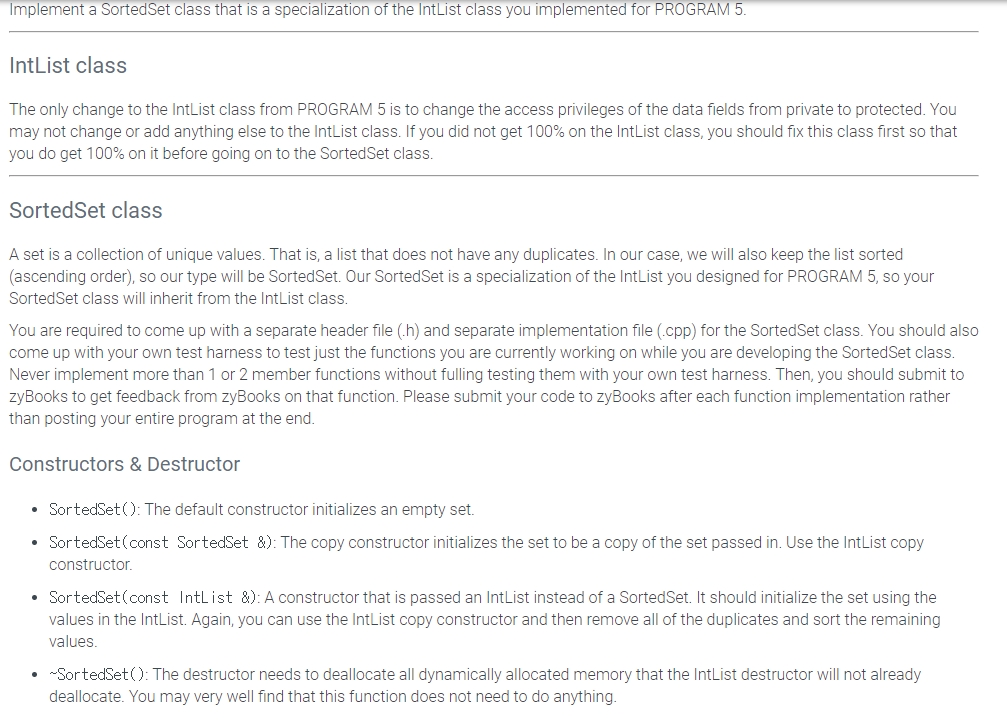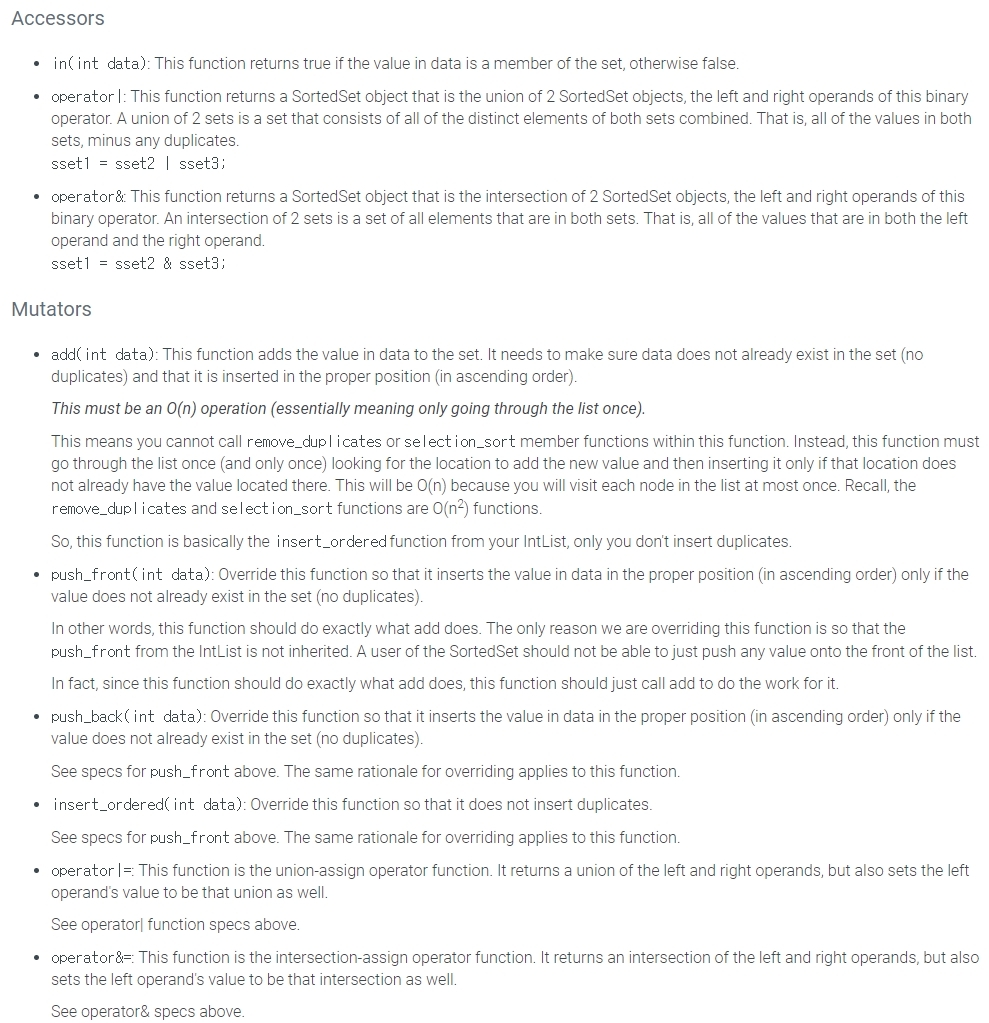Question
use it no changed //IntList.j #ifndef INTLIST_H #define INTLIST_H #include using namespace std; struct IntNode { int data; IntNode* next; IntNode(int data) : data(data), next(0)


use it no changed
//IntList.j
#ifndef INTLIST_H #define INTLIST_H
#include
using namespace std;
struct IntNode { int data; IntNode* next; IntNode(int data) : data(data), next(0) { } };
class IntList {
protected:
IntNode *head; IntNode *tail;
public:
IntList(); IntList(const IntList &); IntList & operator=(const IntList &); ~IntList(); bool empty() const; void display() const; void push_front(int); void push_back(int); void pop_front(); void selection_sort(); void insert_ordered(int); void remove_duplicates(); void clear(); friendostream & operator
private:
// Used by selection_sort function. // Just have this function return nullptr if you don't use this function. IntNode * min(IntNode*); // Used by copy constructor and/or copy assignment operator. // Just implement an empty function if you don't use this function. void copy(const IntList &); };
#endif
Implement a SortedSet class that is a specialization of the IntList class you implemented for PROGRAM 5 IntList class The only change to the IntList class from PROGRAM 5 is to change the access privileges of the data fields from private to protected. You may not change or add anything else to the IntList class. If you did not get 100% on the IntList class, you should fix this class first so that you do get 100% on it before going on to the SortedSet class SortedSet class A set is a collection of unique values. That is, a list that does not have any duplicates. In our case, we will also keep the list sorted (ascending order), so our type will be SortedSet. Our SortedSet is a specialization of the IntList you designed for PROGRAM 5, so your SortedSet class will inherit from the IntList class You are required to come up with a separate header file (h) and separate implementation file (cpp) for the Sortedet class. You should also come up with your own test harness to test just the functions you are currently working on while you are developing the SortedSet class Never implement more than 1 or 2 member functions without fulling testing them with your own test harness. Then, you should submit to zyBooks to get feedback from zyBooks on that function. Please submit your code to zyBooks after each function implementation rather than posting your entire program at the end. Constructors & Destructor SortedSet): The default constructor initializes an empty set SortedSet(const SortedSet 8): The copy constructor initializes the set to be a copy of the set passed in. Use the IntList copy constructor SortedSet(const IntList 8): A constructor that is passed an IntList instead of a SortedSet. It should initialize the set using the values in the IntList. Again, you can use the IntList copy constructor and then remove all of the duplicates and sort the remaining values .SortedSet): The destructor needs to deallocate all dynamically allocated memory that the IntList destructor will not already deallocate. You may very well find that this function does not need to do anythingStep by Step Solution
There are 3 Steps involved in it
Step: 1

Get Instant Access to Expert-Tailored Solutions
See step-by-step solutions with expert insights and AI powered tools for academic success
Step: 2

Step: 3

Ace Your Homework with AI
Get the answers you need in no time with our AI-driven, step-by-step assistance
Get Started


